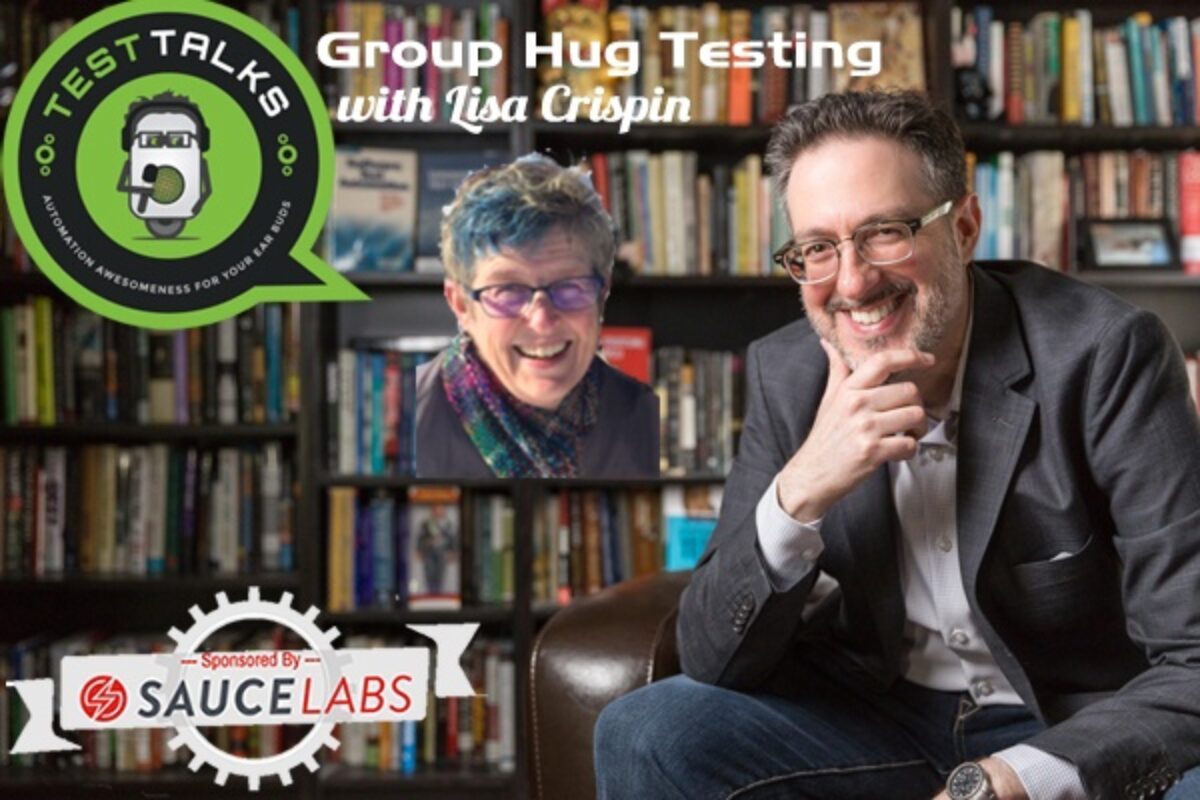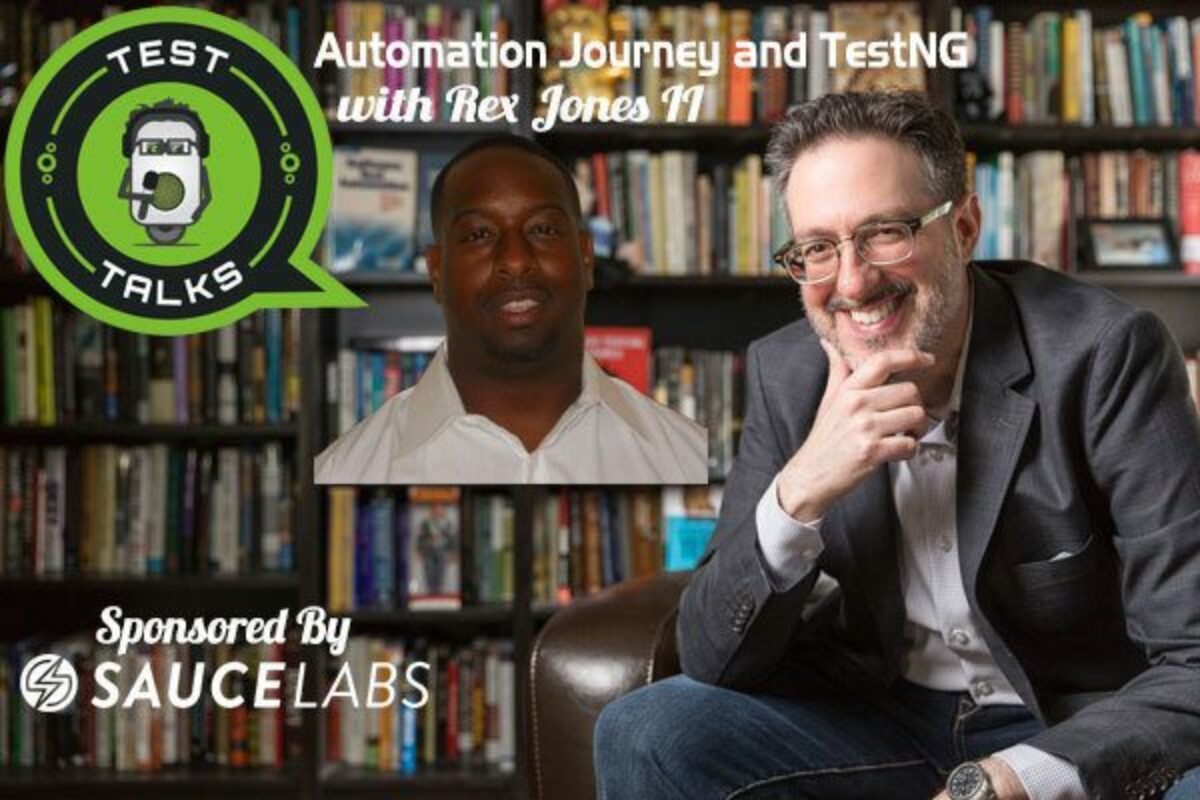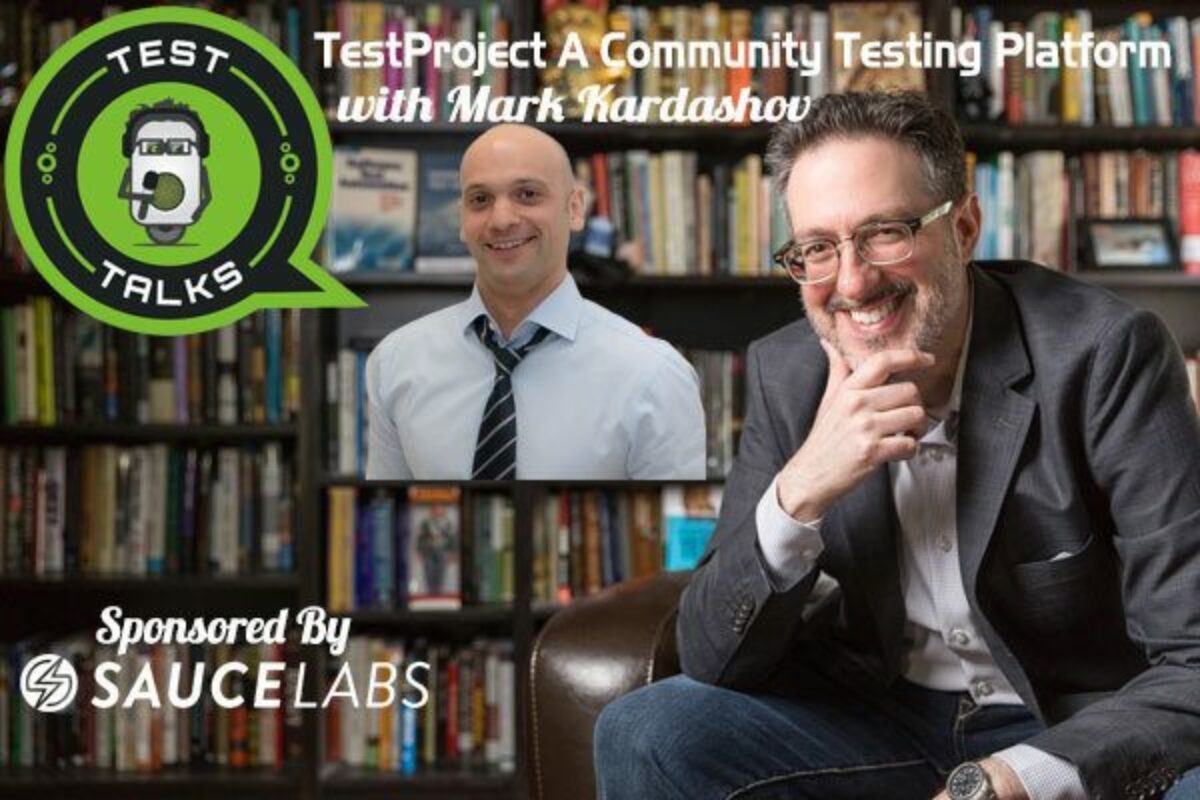In this episode, we’ll Test Talk with one today’s most well- respected testing authors and speakers, Lisa Crispin. Lisa shares with us some of her favorite Agile testing techniques, including how mob testing can help your team rub out bugs one defect at a time, as well as how your team can benefit from testing group hugs. Lisa’s mission is to bring Agile joy to the software testing world and testing joy to the Agile development world, and I think it really comes through in this episode.
Get Full Transcript

About Lisa

Lisa Crispin is a tester who enjoys sharing her experiences and learning from others. She is the co-author, with Janet Gregory, of More Agile Testing: Learning Journeys for the Whole Team (Addison-Wesley, 2014) and Agile Testing: A Practical Guide for Testers and Agile Teams (Addison-Wesley, 2009). Lisa is a tester on a fabulous agile team. She specializes in showing testers and agile teams how testers can add value and how to guide development with business-facing tests.
Her mission is to bring agile joy to the software testing world and testing joy to the agile development world. In 2012, she was voted by her peers as the Most Influential Agile Testing Professional Person, and given this award at Agile Testing Days.
Quotes & Insights from this Test Talk
- Mainly I think Agile testing is a mindset shift in testing going from our traditional model of, okay the code is quote unquote, finished, and now we're going to find bugs to preventing the bugs from occurring in the first place so that testing begins even probably before coding starts.
- taking the whole team approach and getting the whole team to talk about quality and what it means to them, and what level of quality as a team are we committed to providing in our product. Once we've decided that then it's a question of deciding what practices we want to try out, what experiments we want to try to make that level of quality happen
- People do tend to equate agile with speed, and that's not what it's about. Agile is to use Elisabeth Hendrickson's definition, it's about delivering value frequently, so we're trying to deliver every week or every day, or at least once a month, at a sustainable pace, so without killing ourselves over time. The sustainable pace is what captures all the good technical practices that we need, such as continuous integration and test driven development and those kinds of things. A lot of teams get into trouble because they say, “Well, we're going to be agile now,” and they expect things to speed up. The truth is, in my experience, you're going to slow down for quite a long time, but you're going to build a platform of good code and a really good safety net of automated tests and continuous integration that, in
- it's also very difficult to find the testers with the right kind of attitude and mindset to work on an agile team. It really takes such a mindset shift. It's hard to find those people. It's hard to find people who are great exploratory testers, and at the same time have the technical awareness to be able to collaborate easily with the technical team members. You have communication issues. Since it's hard to hire appropriate people, a lot of teams are finding they don't have enough testers. What do they do? What I'm seeing is they're using those testers to train the developers and transfer those good testing skills. Pair with the developers.
- One of the things I do is like pairing is a big one. I think something new that I would like to do more of, I've just started learning about it and trying it, is mob testing. Mob programming is becoming more popular where you have more than a pair, you have a group of developers and you time box it and rotate positions. Someone is at the keyboard driving, somebody's the navigator, and then the rest of the people are just contributing however they see fit. Then you switch every five minutes or ten minutes or whatever it is. You can apply that to testing too. You can do testing with a group of people. I found that's an interesting way to help people get experience. Pairing obviously is a great way to transfer skills.
- I would say think of your biggest testing problem, and take it to your whole team, your whole delivery team, and say, “We've got this testing problem. Can you help me think of experiments to make this problem smaller?”
Resources
- Agile Testing: A Practical Guide for Testers and Agile Teams
- More Agile Testing: Learning Journeys for the Whole Team
- Testing Extreme Programming
- Maaret Pyhäjärvi – Mob Testing
Connect with Lisa
- Twitter:@lisacrispin
- Blog: lisacrispin.com
May I Ask You For a Favor?
Thanks again for listening to the show. If it has helped you in any way, shape or form, please share it using the social media buttons you see on the page.
Additionally, reviews for the podcast on iTunes are extremely helpful and greatly appreciated! They do matter in the rankings of the show and I read each and every one of them.

Test Talks is sponsored by the fantastic folks at Sauce Labs. Try it for free today!





